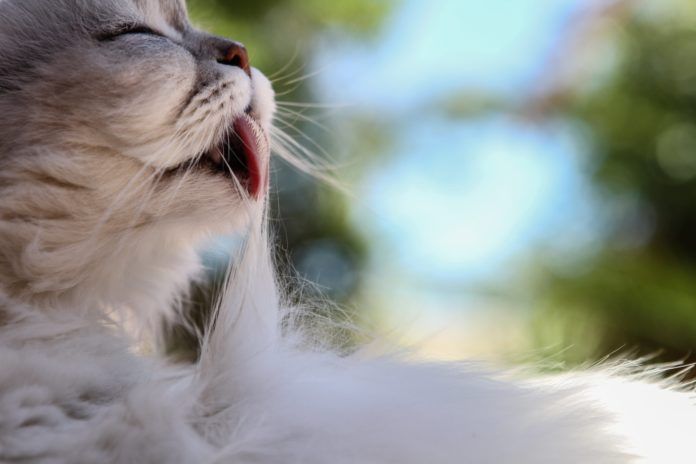Who really knows why – and the cat’s not talking – but most hairballs seem to end up perfectly placed on a bedroom rug to be stepped on first thing in the morning. This cold, slimy mystery wad is just one of the things cat owners need to get used to because, well, hairballs are normal. They are the common byproduct of grooming.
“These obstructions are made up mostly of hair that a cat has swallowed while grooming, mixed with saliva, digestive juices and leftover food that’s in its stomach,” says Elizabeth Rozanski, DVM, associate professor of emergency and critical care at Tufts University of Veterinary Medicine.
Feline hairballs and how they start
The majority of cat hair will pass through the digestive tract with no problems. But if some hair stays in the stomach, it can form a hairball. (Usually, your cat will throw up the hairball just to get rid of it.) Interestingly, kittens and young cats are less likely to develop hairballs than older cats who, as well-experienced groomers, are likely to spend a good portion of their time busily licking their coats. Some cats are simply more fastidious than others in their grooming habits, and long-haired breeds — such as Persians, Ragdolls and Maine Coons — are at greater risk for developing hairballs than are short-haired cats. And the development of hairballs is more frequent during times of the year when cats shed their coats.
It’s not unusual for some cats to throw up a hairball once every few weeks or so, says Dr. Rozanski, and that shouldn’t be a cause for concern. But if the cat vomits a hairball once a week or more — especially if it is uncharacteristically lethargic and refuses to eat for more than a day — veterinary consultation is in order, especially if the animal has repeated episodes of unproductive retching. It’s possible that a hairball has passed from the cat’s stomach into its intestines, creating a potentially life-threatening blockage somewhere within the digestive tract that may need to be surgically removed.
It’s also important to know that frequent hacking and coughing may have nothing at all to do with hairballs. It could be a sign that the cat is suffering from a serious respiratory problem like feline asthma, which can be life-threatening and require prompt veterinary intervention. “Unfortunately, there are cases in which the owner believes that the cat has hairballs when it turns out that they have lung disease,” says Dr. Rozanski.
Hairball treatment for cats
The best way to prevent hairballs is to regularly brush or comb your cat’s fur, especially if she has long hair. This will reduce the amount of hair that can be digested (and will likely benefit your favorite black sweater, too). Additionally, there are special cat food diets to help prevent and/or control hairballs — and even hairball prevention supplements like gels — that can be beneficial to some cats.
And if you ever want to impress one of your cat-loving friends coping with this all-too-common problem, the technical word for hairball is “trichobezoar.”




